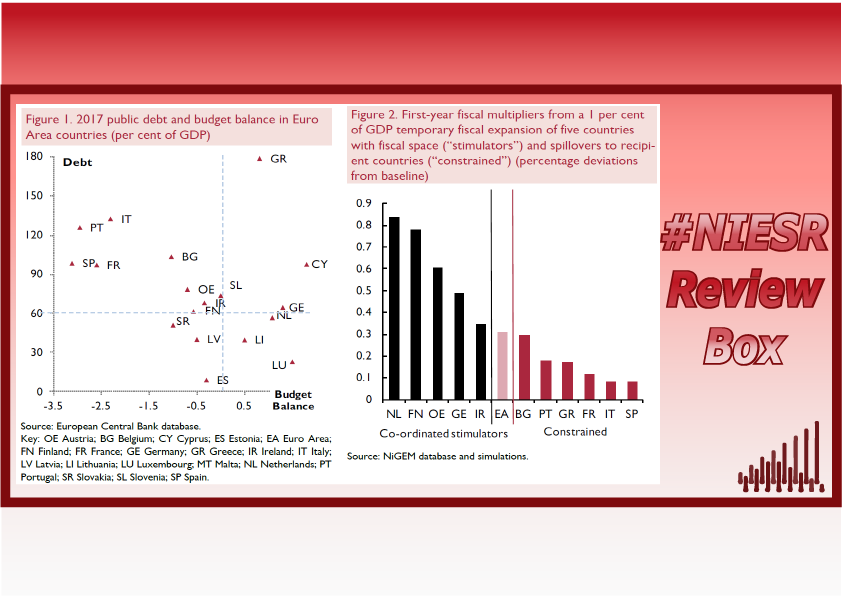- Home
- Publications
- Intra-Euro Area Spillovers – Simulating The Effects Of Fiscal Stimulus
Intra-Euro Area Spillovers – Simulating the Effects of Fiscal Stimulus
Sign in to Access Pub. Date
Pub. Date
 Pub. Type
Pub. Type

Downloads
This content is restricted to corporate members, NiGEM subscribers and NIESR partners.
Related Themes
Macro-Economic Dynamics and PolicyThis is a preview from the National Institute Economic Review, August 2018, no 245.
This Box, prepared by NIESR Economist Marta Lopresto, addresses the heterogeneity of fiscal positions in the Euro Area, with a view to examining the effectiveness of fiscal expansions undertaken individually and collectively in stimulating aggregate demand in the monetary union.
The analysis uses the National Institute’s Global Econometric Model (NiGEM) to examine the effect of a co-ordinated Euro Area fiscal expansion and an expansion conducted by member states in isolation. The different scenarios simulate an expansion to government spending of the same magnitude (1 per cent of GDP) and duration (for two years), before they gradually revert to baseline. Monetary policy and exchange rates are kept exogenous for the duration of the shock.
"Many factors would contribute to the size of the final effect of a fiscal expansion. These results, however, provide a basis for ranking the effectiveness of various policies either co-ordinated across countries or undertaken in isolation. If a fiscal boost is implemented simultaneously, the fiscal multipliers are larger for all countries in the monetary union, with the trade spillover channel accounting for some 30 per cent of the average rise in output".
Related Blog Posts



Public Debt Sustainability and Fiscal Rules
Stephen Millard
Benjamin Caswell
05 Feb 2024
4 min read

Related Projects
Related News

Call for Papers: Lessons From Quantitative Easing & Quantitative Tightening
09 Feb 2024
1 min read



Related Publications

The Financial (In)Stability Real Interest Rate, R**, as a Monetary Policy Constraint
07 Feb 2024
Global Economic Outlook Box Analysis

Geopolitical Risks and the Global Economy
07 Feb 2024
Global Economic Outlook Box Analysis

The Spectre of a US House Price Correction
07 Feb 2024
Global Economic Outlook Box Analysis

Inflation Differentials Among European Monetary Union Countries: An Empirical Evaluation With Structural Breaks
20 Nov 2023
National Institute Economic Review
Related events

Assessing Cycles and Structural Changes in Markets

Business Conditions Forum

2022 Dow Lecture: The Economy and Policy Trade-Off





